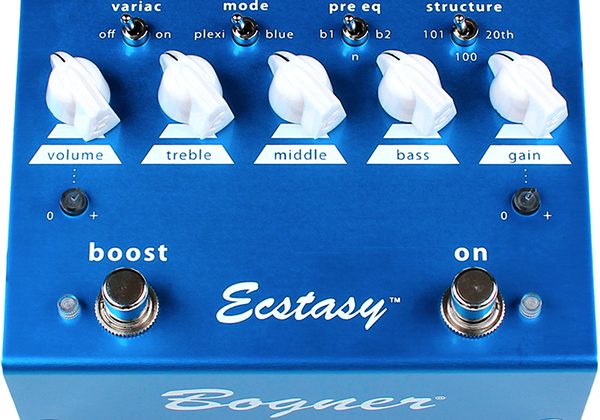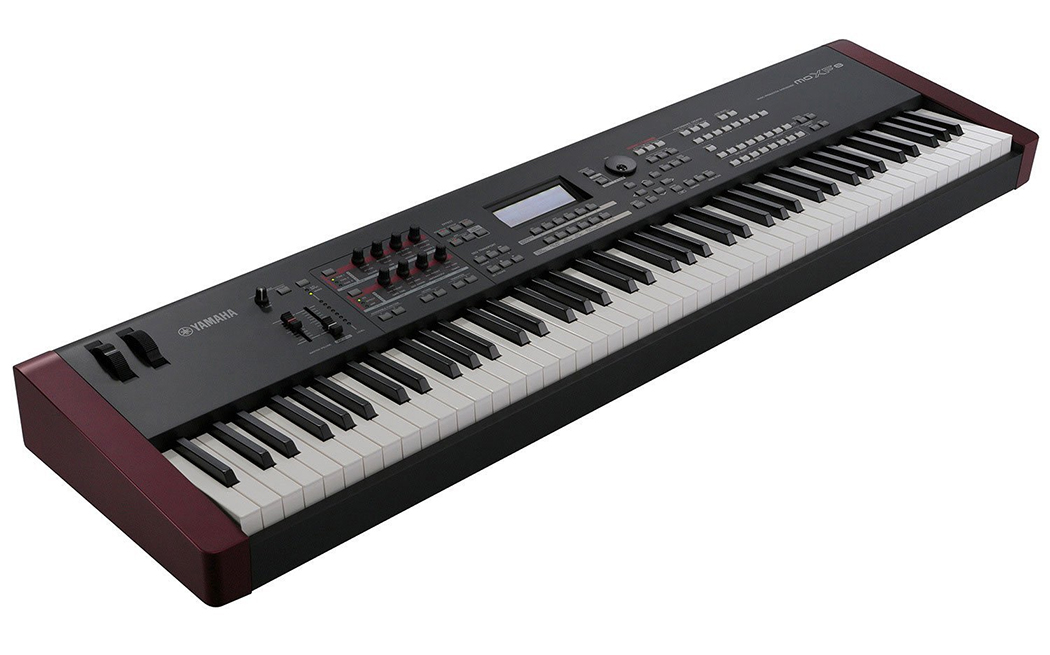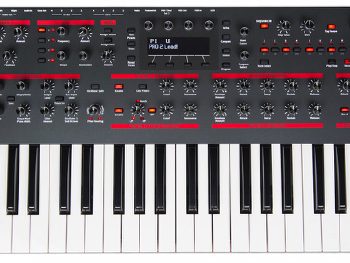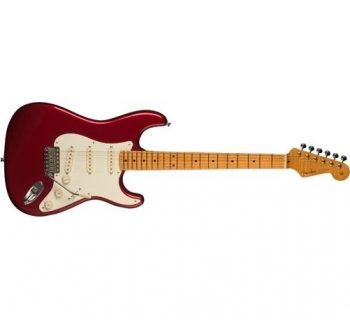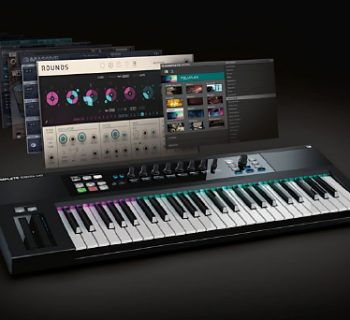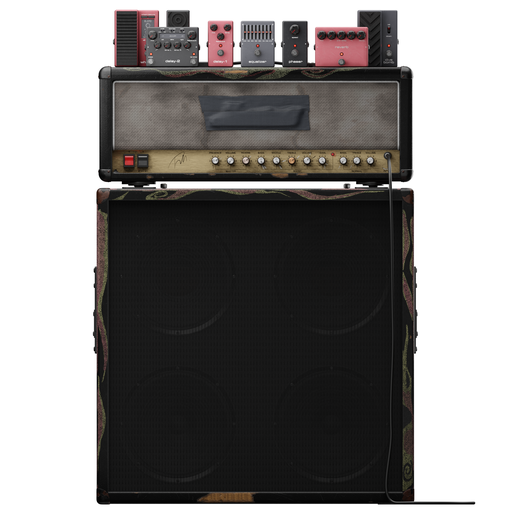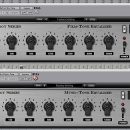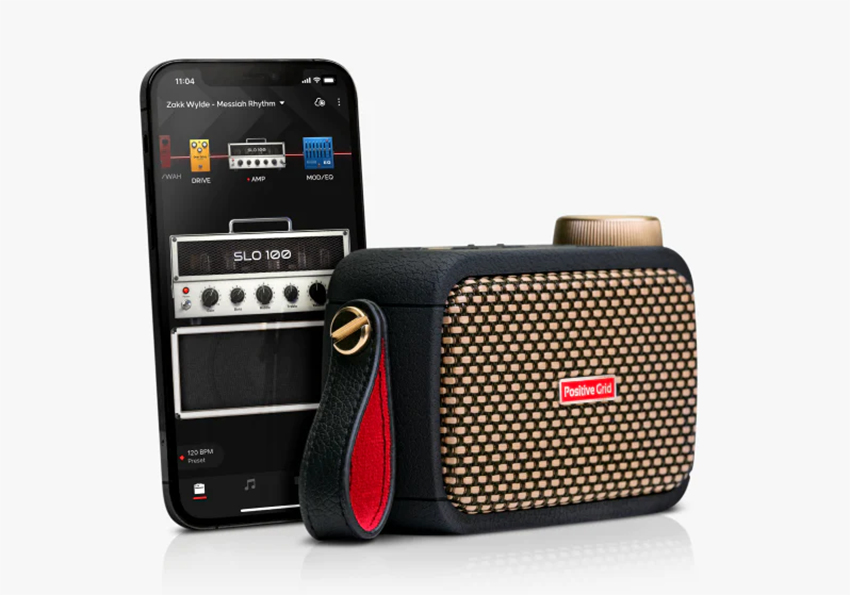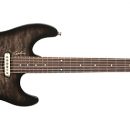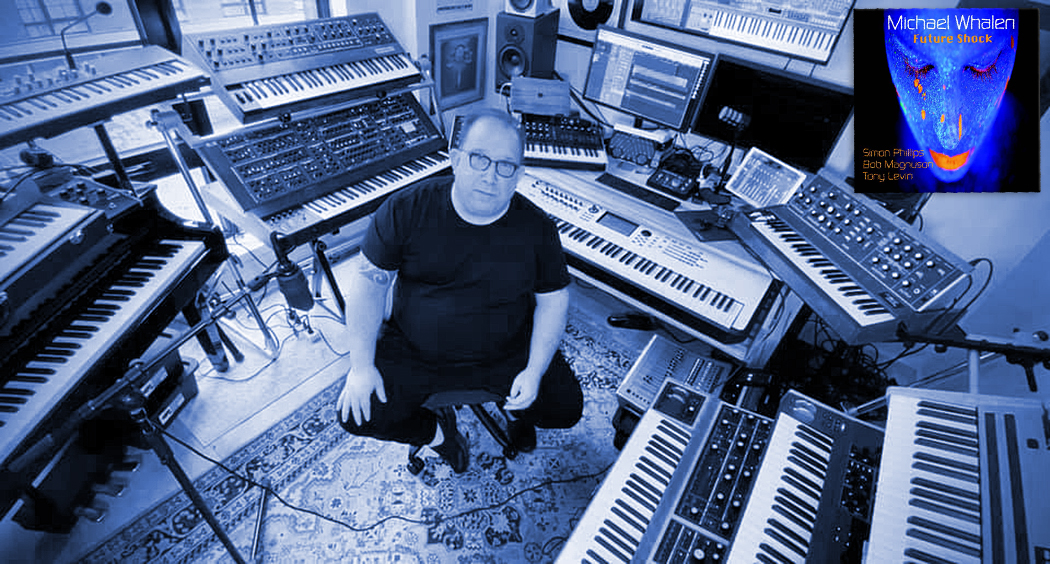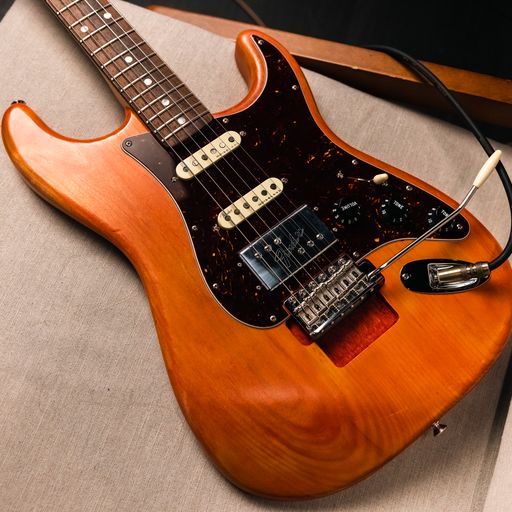
Few boutique amps garner the type of respect that is rightfully bestowed on the Bogner Ecstasy. However, given the exclusivity of these fine amps—chiefly the hefty price tag for such handmade goodness, owning one may be out of reach for many of us. The good news is, now you can tap into the righteous tones by way of the Bogner Ecstasy Blue and Ecstacy Red overdrive pedals.
Each pedal is based on a specific channel from the Ecstasy series and remarkably, each pedal also allows us to tap into the tonal bliss of the Ecstasy 100, 101, and 20th Anniversary model amplifiers.
True, we have heard the claim about “amp tone in a pedal” before, and the usual experience is less than stellar. However, we’re happy to report that these Bogner pedals not only make good on that claim, but they deliver in a big way.
Features
Both the Ecstasy Blue and Ecstasy Red pedals are housed in rugged, metal cases and share the same basic features and control scheme, as well as true bypass circuitry. Five master controls across the top of the pedal allow you to dial in Volume, Treble, Middle, Bass and Gain.
Four mini toggle switches allow for further tone tweaking. Variac On/Off allows the player to “brown” the sound by applying dynamic compression, which gives the illusion of dropped voltage. A pre EQ switch provides a way to adjust the higher frequency range making the sound more “open” or “present.” A Structure switch provides different gain structures and EQ structures from various eras/models of Ecstasy amplifiers. Finally, a Mode switch allows for additional tone shaping and gain structure.
The Blue pedal allows the user to select Plexi or Blue modes while the Red pedal features Tight, Full and Mellow modes.
Each pedal also sports a Boost function (both volume and gain) with independently lit volume and gain controls. The Boost function (as well as on/off) can also be controlled via a remote switching unit using the pedal’s remote jack. The pedal can be powered with a 9-Volt battery or a 9-Volt DC power supply. The pedal even sports a “low battery” indicator to let you know when you are about to run out of juice! It is interesting to note that according to Bogner’s website, even though a 9-Volt battery powers the pedal, the internal circuitry actually elevates that voltage to improve dynamic range and make the presentation more “amp-like.”
You won’t find any cheap internal components in these pedals, either. In fact, Bogner has even exceeded components we have seen installed in many high-end boutique pedals! In addition to avoiding op-amps and diode clipping, the pedals use double-sided, gold plated circuit boards, German WIMA capacitors, Japanese Nichicon capacitors, gold plated relays, and genuine Carling switches, just to name a few!
Usability
When it comes to actually operating these pedals, despite the richness in features, they are extremely intuitive to use.
The four knobs are basically set-to-taste and handle your basic tone shaping duties. We found these controls to have plenty of range with a usable tonality across the spectrum. The only exception (albeit minor) we found was the Bass control while in high gain mode. Compared to the other tone controls, to our ears it seemed to have slightly less effect on the overall tonality.
 Once your basic EQ is dialed in, the remainder of your sound is shaped via the four mini toggle switches directly above the knobs. Again, your ears and personal taste will be your guide. One neat feature of the Pre Eq switch is the ability to completely bypass it by placing the switch in the middle “neutral” position.
Once your basic EQ is dialed in, the remainder of your sound is shaped via the four mini toggle switches directly above the knobs. Again, your ears and personal taste will be your guide. One neat feature of the Pre Eq switch is the ability to completely bypass it by placing the switch in the middle “neutral” position.
As mentioned earlier, both pedals feature a footswitchable boost for both volume and gain. Although not an uncommon feature for pedals of this pedigree, these Bogner pedals simplify things by including two small potentiometers located directly beneath the pedal’s main volume and gain knobs. These mini pots allow you to independently set the gain and volume and to let you know the boost is in effect, these mini pots house LEDs that light up when you stomp on the Boost switch.
Sound
Ecstasy Blue:
We decided to start our evaluation with the lower gain, more vintage-sounding Ecstasy Blue.
It would be an absolute crime to evaluate these pedals as a simple “clean boost” in front of our already gained up amps. There are loads of cheaper and simpler pedals (you know their names!) that should be considered first for that particular task. The Ecstasy pedals simulate actual, full-size amp tone; therefore they will perform best when your amp is used as a platform for these pedals, thus creating the multi-channel amp of your dreams!
Two of our amps were perfect for this type of evaluation: A 100 Watt Rivera R100 combo and a Germino Lead 55, which is a late 60s Plexi clone. The Rivera is notorious for a crystalline Fender clean, and the Germino is a non master volume amp that requires the volume on “10” to get the classic tone, otherwise it is quite clean. Our guitar of choice for the evaluation was a Gibson Les Paul Historic with ‘57 Classic humbuckers.
We started by setting the volume and tone controls all to the 12:00 noon position and set the pedal to Plexi Mode with structure set to 100 (amp model #) and Pre Eq defeated. With our Rivera set to clean, kicking on the pedal immediately invoked an authentic low gain amp tone and even added some smooth low end and a well defined top. Turning the gain up slightly gave our Rivera’s tone slightly more body and girth. Mids were a bit aggressive in this mode but you’ll be thankful for this in a full band situation— it will really help you cut through the mix. If mids are not your thing, you may find that setting the structure to 101 tames the mids a bit but at the expense of that “sting” your single notes have while in 100 mode.
Using these same settings but with the structure set to 20th anniversary mode gave us arguably the best tone for Angus Young, Jimmy Page or Cream-era Eric Clapton. Even with the gain completely maxed out, you could clearly hear each string ring out as well as the attack of the pick on the strings. Invoking the Variac switch brings a bit of “squish” to the delivery, and Pre Eq helped us define the highest of frequencies for either a smooth or biting top end. Think Page’s intro to the Led Zeppelin classic “Heartbreaker”—it’s right here.
The boost works exactly the way one would expect with one notable exception. Although it is designed to independently boost the volume and gain, it also has a noticeable effect on the eq – in particular, the upper frequencies. For example, we noticed the high end soften up when we boosted the gain from noon to maximum. Similarly, when boosting the volume significantly we heard an undeniable change in the upper mids. Not “spikey,” mind you, but enough to make you notice. This was an unexpected, but totally welcome phenomenon that opens up the pedal’s tonal palette even more.
Ecstasy Red:
Molten overdrive tones are what made Bogner a household name amongst self-professed high-gain fanatics (such as the staff here at MusicPlayers.com!) So cramming all that high-gain goodness into a pedal may seem too good to be true. Fortunately, it appears Bogner has succeeded with the task at hand, in a way that very few pedals truly master.
We chose our Germino Lead 55 as the platform for the Red pedal. We were keen on seeing if we could play this non master volume amp at a volume below the threshold of pain, while getting all the gain from the pedal when needed. We first chose a relatively low gain setting by selecting the 100 mode, setting the gain around 10:00, and tone controls to taste. The result was a very thick and chunky sound, great for chord work. Single notes rang out with authority and sustaining those notes often resulted in controlled, singing feedback. Most impressive is how the Red pedal reacts to picking dynamics, just like the actual Bogner amplifiers we own.
We then switched over to the 101 mode and increased the gain to about 1:00. The 101 mode adds a pinch of compression and slightly rolls off the high end. The result is a convincing and tight high-gain tone perfect for anything from Soundgarden to Dream Theater. Engaging the B1 presence boost adds a bit of sparkle to the sound which was perfect for single note soloing. With the Variac switch engaged, the tone loosened up in a pleasing way and the attack was less immediate.
The 20th anniversary mode is by far the most aggressive, and with the gain set high, you can cover anything from Metallica to Slayer. In this mode, it almost seems like everything is heightened—the already usable sweep of the EQ controls seemed even more sensitive to minor tweaks. What impressed us the most is that even under high gain, the tone never comes close to turning into mush. In fact, it has a certain harmonic swirl that is pleasing to listen to. Extreme high gain does come at a price however, and there is indeed quite a bit of hiss when the gain control is set above the 1:00position, but this is to be expected.
The Verdict:
It’s a tie! Yes, that may sound like a complete cop out, but both pedals do what they do extremely well, and it boils down to personal requirement and taste. Old school, vintage players raised and weaned on the classic designs of the 1960s will flock to the Blue pedal. Hard rock and metal guys who crave high gain or a more modern tone will certainly want the Red.
Documentation and Product Support
Our pedals each came packed with a brief but informative owner’s manual, which is also available online. The manual did a good job of explaining the functionality of the basic controls, but it would have benefitted from some sample settings to help get things started.
Price
The Bogner Ecstasy Red and Ecstasy Blue (MSRP $349) sell for approximately $300 apiece on the street. Considering we have owned boutique pedals costing just as much—if not more, yet offering significantly less quality and performance, and that you’re getting a true guitar amplifier preamp section in a pedal, we think the pedals are priced quite well.
Contact Information
Bogner
www.bogneramplification.com
Overall Rating - Product Summary
| Category | Value | Rating |
| Features | 20% | |
| Usability | 25% | |
| Sound | 25% | |
| Documentation & Support | 10% | |
| Price | 20% | |
|
|
||
| OVERALL RATING = 3.7, which earns it a WIHO Award!
3.6 stars or better: Outstanding, WIHO Award |
||

